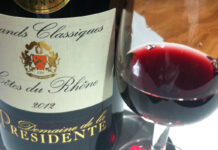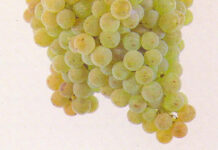Luke Richardson is a sommelier who has worked in a range of venues across the UK during his 20-year career and is now manager and sommelier at The Räv in St Andrews. In his column for SLTN he shares his thoughts on all things wine-related and answers your questions about wine. If you have a question for Luke email it to sltn@peeblesmedia.com

Hello again all.
As it starts to feel like summer again, I thought I would talk about rosé wines.
Often misrepresented, a good dry rosé can be one of the most versatile and pleasurable glasses of wine available. Here I’ll talk generally about a few different styles and how they might fit in your establishments.
First off, the royalty of the dry rosé family – and somehow the summeriest of them all – Côtes de Province Rosé. The style here is persistently dry, with power and elegance.
Often with aromas suggestive of strawberries and cream or soft baked apricots with touches of spice on the palate, they are both pretty but firm, fruity and flavoursome. They match well with a huge array of food – barbecues, tomato-based pasta dishes, pork – even Bouillabaisse, the local spiced fish broth.
The main grapes here are Cinsault and Grenache and the wines should be salmon pink in colour or paler. Essentially, they are closest to that perfect balance of what people want from a rosé – the freshness of a white wine with the structure of a red. In these crazy times, expect to pay upwards of £9 a bottle plus VAT.
Next, a group of wines that are a bit more accessible and a bit better value. Rounder, less powerful wines with a bit more discernible fruit on the palate and a less punchy finish. That’s rosé from the Languedoc, Montepulciano Rosata from Abruzzo, Nero d’Avola Rosato from Sicily, from the Loire Valley, the lighter coloured Portuguese examples and huge tracts of Spain – again look for the lighter coloured wines there.
If you’re only going to have one rosé, this would probably be it – aromas and flavours vary wildly from sour cherry, raspberry, redcurrant, pomegranate, cranberry and the like; and whilst they’re not perfect with many dishes, they are pretty damn good with most, and very pleasurable without food too! Prices can be £6 plus VAT and up – it’s about finding one with decent roundness of fruit but also nice freshness.
As the price rises, they tend to get more structured but in my opinion that’s not necessarily a good thing – this is essentially a hedonistic, frivolous style at a decent price – and a pretty good all rounder at that.
Lastly, new world rosé. Much more ripe fruit from longer sun hours normally also means the wines struggle for some acidity and therefore have an even rounder texture in the mouth. Probably mostly enjoyed by people who also like easily-accessible, heavily-fruited South American reds such as Chilean Carmenère or the lighter Argentine Malbecs.
Better with barbecue foods with lots of savoury and sanguine sweetness than with lighter flavoured foods, prices from around £7 plus VAT and up for the OK ones, although weaker examples are available for less.
Briefly, all should be served fairly cold. There isn’t a rule of thumb, except the better quality wines are enjoyable slightly warmer than the better value ones – like everything rosé, it’s all a compromise between if you want the weight of the red or the freshness of the white elements to the wines.
Personally, I know very little of sweeter rosés and have never listed one. A glass of house white with 10-15ml of Creme de Cassis blackcurrant liqueur is the classic kir, and most sweet rosé drinkers enjoy these – simply add a little more cassis if they want it sweeter. I normally add between £1.50 to £2 per 175ml glass for the privilege. Until next time, happy rosé-kiring!!



















